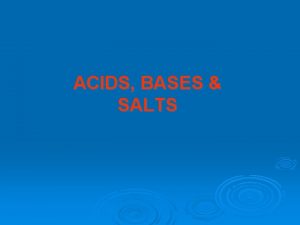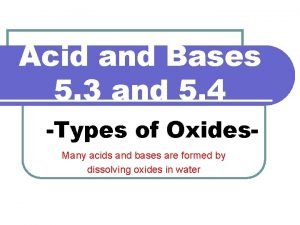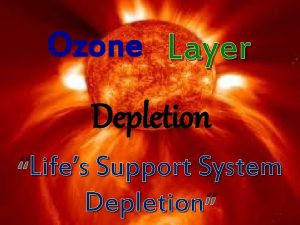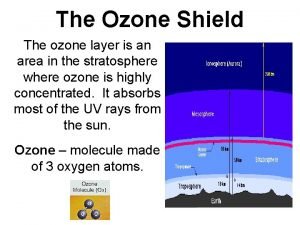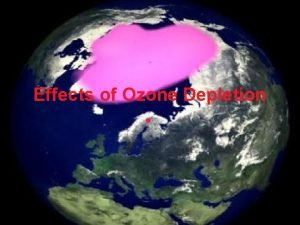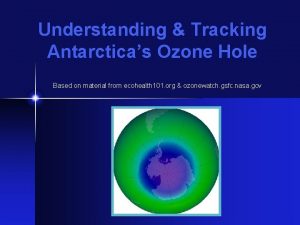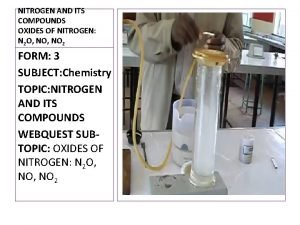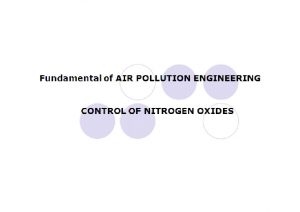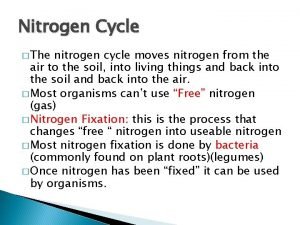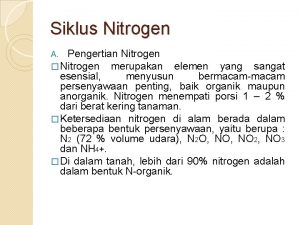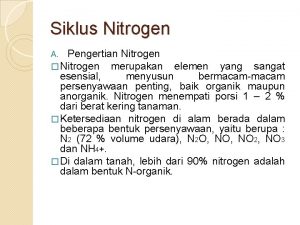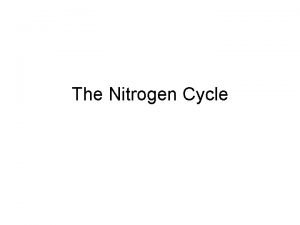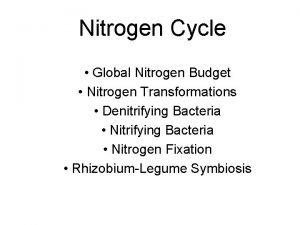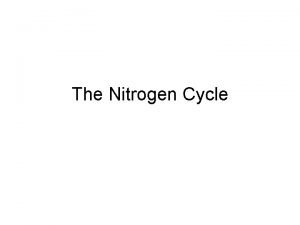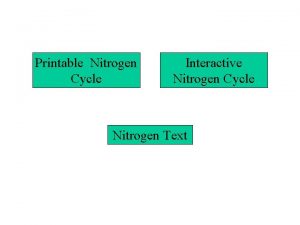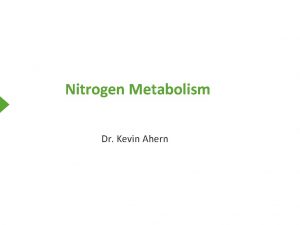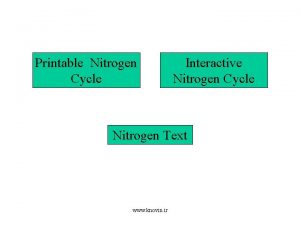This presentation summarises measurements of ozone nitrogen oxides















- Slides: 15

This presentation summarises measurements of ozone, nitrogen oxides, carbon monoxide, methane and carbon dioxide that were made during the first four ACSIS (North Atlantic Climate System Integrated Study) flight campaigns. The ACSIS program is an ongoing 5 year project (2017 - 2021) which sets out to enhance understanding of the North Atlantic climate system and the drivers of multidecadal variability in North Atlantic sea surface temperatures (AMV). Measuring the composition of the atmosphere over the North Atlantic is key to gaining a better understanding of the North Atlantic climate system. Measurements were made from the UK's Atmospheric Research Aircraft, a BAe-146 -301 jet. Approximately 80 hours of measurement data was collected over 20 survey flights of the North Atlantic ocean allowing a picture of the spatial distribution of pollutants to be built up. During the flights a wide range of air masses were intercepted, including biomass burning air masses one of which is presented as an example. Data suggests that chemical signatures are preserved as pollutants are transported from source to North Atlantic. Ultimately the aim of these flights is to evaluate how well chemistry models represent the region and some initial data comparing to GEOS-Chem is shown.

Measurement of Gas Phase Pollutants over the North Atlantic Ocean James Lee 1, 2, Freya Squires 1, Simone Andersen 1, Jim Hopkins 1, 2, Dominika Pasternak 1 and Alex Archibald 3 1 Wolfson Atmospheric Chemistry Laboratories, University of York, UK 2 National Centre for Atmospheric Science, University of York, UK 3 Department of Chemistry, University of Cambridge, UK

The ACSIS Program • The 5 year (2017– 21) North Atlantic Climate System Integrated Study (ACSIS) sets out to enhance understanding of the North Atlantic climate system and the drivers of Atlantic multidecadal variability (AMV). • ACSIS studies all aspects of the climate system; the ocean, its interactions with Arctic sea ice and the Greenland ice sheet and the composition of the atmosphere above. • Changes in atmospheric composition can be linked to Atlantic Multidecadal Variability (AMV). Sutton et al. , BAMS, 2017

The ACSIS Program • Measurements for the ACSIS campaign were carried out by the UK’s BAe-146 Large Atmospheric Research Aircraft, managed by FAAM. • Atmospheric Research Aircraft are useful research tools which allow a large area of the atmosphere to be studied. • In this presentation, atmospheric composition data for the first four ACSIS campaigns (February 2017 – February 2019) are presented.

The BAe 146 Crew 3 Scientists 18 Length 31 m Wingspan 26 m Height 8. 4 m Engines 4 Honeywell LF 507 -1 H Turbofans Max Altitude 35000 ft Min Altitude 50 ft Range 3700 km Cruise Altitude 27000 ft Typical Sortie Duration 4 – 5 hr Science Speed 200 kts Payload 4000 kg instrumentation

Instrumentation onboard the BAe 146 • Instrument fit includes ‘core’ instruments – operated by FAAM (basic chemistry, aerosols and meteorology) and mission-specific instruments – operated by other institutes/universities. Chemistry Measurements: • O 3 (UV absorption spectrometer, Thermo Scientific TEi 49 i) • CO (Resonance fluorescence, Aero-Laser AL 5002) • CH 4/CO 2 (IR absorption spectroscopy, Los Gatos Research Fast Greenhouse Gas Analyser) • NOx (chemiluminescence, Air Quality Design) • VOCs (Whole Air Samples, WAS in rear hold)

Overview of ACSIS Flight Tracks • Based out of the Azores, Portugal or Cork, Ireland completed survey flights of the atmosphere in four directions. • Approximately 80 hours of measurement data collected during the four ACSIS campaigns. • Measurements made at altitude between 50 m and 7600 m. • Wide range of air masses sampled.

Vertical Distribution of Gas Phase Pollutants Box and whisker plots showing how concentrations vary above and below the boundary layer. Data from the four ACSIS campaigns has been included in these plots. Boundary layer was determined for each individual flight using temperature profile data.

Spatial Distribution of Gas Phase Pollutants • Data presented has been grouped into 2° longitude bins and the median value presented as a thick line. The shaded areas represent the lower and upper quartiles of the data to show the spread. Data from all four campaigns is grouped together. • All pollutant concentrations (apart from O 3 due to titration) are enhanced within the boundary layer between 0 – 10 °W, likely due to emissions from major shipping lanes and Europe. • For NOx there are enhancements in concentrations above the boundary layer at 0 – 10 °W due to mixing of air from within the boundary layer. NOx concentrations are at trace levels west of the Azores. Lajes Airport Porto Airport • There are enhancements in CO west of the Azores likely due to transport of polluted air from North America.

Spatial Distribution of Gas Phase Pollutants • Data presented has been grouped into 2° latitude bins and the median value presented as a thick line. The shaded areas represent the lower and upper quartiles of the data to show the spread. Data from all four campaigns is grouped together. • Pollutants generally enhanced at most northerly latitudes of flight tracks, especially noticeable in NOx and CO within the boundary layer. Lajes Airport Porto Airport

HYSPLIT Back Trajectories 96 hour HYSPLIT back trajectories, initiated at the mid point of every straight level run on each flight coloured by altitude in meters. All four campaigns were influenced by air passing over North America, with air masses originating west of the Azores dominating.

Case Study: Biomass burning influenced air mass • Previous studies in the region have attempted to classify the different types of air mass over the North Atlantic by analysing chemical signatures and back trajectories. • Biomass burning influenced air masses have been measured in the region. • Biomass burning influenced biomass are associated with high concentrations of CO and VOCs and low d. O 3/d. CO values. • During flight B 998 (flight west of the Azores, flight track below), a biomass burning influenced air mass was sampled. Lapina et al. , Geophys. Res. Lett, 33, 2006; Val Martin et al. , J. Geophys. Res, 113, 2008, Lewis et al. , J. Geophys. Res, 2007; Zhang et al. , Elem Sci Anth, 5, 2017

Case Study: Biomass burning influenced air mass • Dashed lines on time series show where biomass burning influenced air was intercepted. Run altitude was 4361 m. • Enhanced CO concentrations ranging from 129 ppbv – 147 ppbv during the run. Ozone concentrations were between 44 and 48 ppbv. • Ethene elevated in sample taken (87 pptv). • d. O 3/d. CO value, calculated from RMA regression analysis was 0. 15, in the range for aged biomass burning air. Jaffe and Wigder, Atmos. Environ. , 51, 2012

Case Study: Biomass burning influenced air mass • Plot shows 96 hour HYSPLIT back trajectory initiated at the midpoint of run 11 on flight B 998, coloured by height. Orange dots show the location of active fires on 10/02/2017, four days prior to flight B 998. Fire location was determined using fire radiative power data from Global Fire Assimilation System (GFAS). • Suggests that air mass has encountered burning and chemical signature has been preserved during transport.

GEOS-Chem Evaluation and Future Work • A central aim of the ACSIS program is to evaluate how well models represent the North Atlantic. • The GEOS-Chem model was run along the flight tracks for the first two ACSIS campaigns. • Data here is preliminary and work on this is ongoing. Plots indicate spatial variation in modelmeasurement agreement. If the model agrees well with measurement data the value will be 1. If the model overestimates measurements values will be >1 and if model underestimates concentrations values will be <1. Thanks to Tomás Sherwen for model data.
 Dp periodic table
Dp periodic table Difference between metal oxides and non metal oxides
Difference between metal oxides and non metal oxides Classify the following oxides as acidic or basic
Classify the following oxides as acidic or basic H3b03 structure
H3b03 structure Neutral oxides
Neutral oxides Intermediate oxides in glass
Intermediate oxides in glass Basic oxide
Basic oxide Protective ozone layer
Protective ozone layer Ozone layer levels
Ozone layer levels Negative effects of ozone layer depletion
Negative effects of ozone layer depletion Trou d'ozone
Trou d'ozone Ozone depletion effect on humans
Ozone depletion effect on humans Ground level ozone effects
Ground level ozone effects Sop med
Sop med Cause of ozone depletion
Cause of ozone depletion Ozone layer depletion introduction
Ozone layer depletion introduction




